Exhibitions, Projects
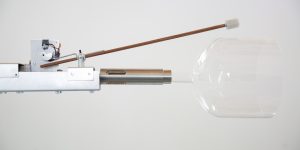
Smart.ing Bodies
Evelina Rajca (PL)
Sand, or to put it more precisely high-purity silicon dioxide particles, is the essential raw material from which we make concrete, glass, fiberoptic cables, computer chips, and other high-tech hardware. The installation Smart.ing Bodies features “glass instruments” made of quartz sand that Evelina Rajca collected from disappearing beaches and mountains around the world. The multisensory sound installation consists of those two glass resonators, sensors, motors, and an algorithmic composition created partly by AI learning processes. In order to keep on playing and to avoid a “resonance disaster” (the destruction of the glass or motor), the algorithmic program has to learn to conduct a variety of smart frequencies. What can be heard is the sound of sand, which is pure yet complex and ever-changing.

Insect a new media
Fernando Asensio (ES), José Luis Cuenca (EC), Alejandra Florez (CO), Silvia García (ES), Noelia Medina (ES), Jordi Sos (ES)
This interactive installation proposes a symbiosis between obsolete technology and natural environment, as an approach to a dystopian future world. A group of sculptural objects composed of plants and technological waste, a multi-screen projection device, a technological codex and a descriptive catalogue make up this undead multimedia project.
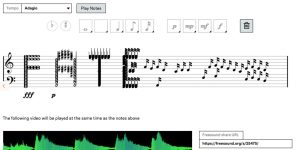
Wiki-Piano.Net
Alexander Schubert (DE)
Wiki-Piano.Net is a composition for piano that can be co-designed by internet users. Everything that the community has made available on the website will be performed on stage. This can be not only music, but also texts, images, or other content. For the musical realization of this score, the performing pianist has piano, keyboard, and his own voice at his disposal. It is not possible to study and practice this composition in the classical sense, but it is not the masterpiece either that is in the foreground of this project. Rather, it is a matter of continuous observation and playful exploration of community behavior and internet use.

Arte Eletrônica Indígena (Electronic Indigenous Art)
Thydêwá
The Arte Electrônica Indígena (AEI) project was designed and executed by the NGO Thydêwá. It consisted of a series of ten short artistic residencies in indigenous communities in the Brazilian Northeast in order to co-create works of electronic art. These were exhibited to the public at the Museum of Modern Art, Salvador da Bahia, in August 2018 and have since toured the indigenous communities themselves.
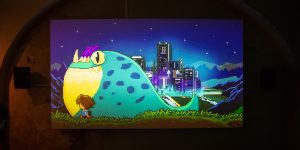
Strings
Ruini Shi (CN)
Strings is a poetic animation in the style of early computer games. In this setting the main character is in search of his lost love in an obsolete online game. The film tells a story about mediated intimacy by depicting a range of virtualized spaces or realms in a game, aiming to open up new ways of thinking about digitally mediated relationships.
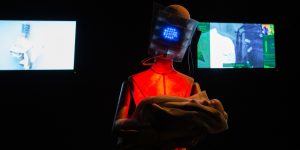
ROBOTIKA, The Nannybot
Joaquín Fargas (AR)
Robotika is a cyber nanny whose duty is to preserve the human race. Robotika challenges the limits of the human being concept. It is a robot vested with artificial intelligence that shall act as a “galactic ark,” looking for a suitable environment for human development.
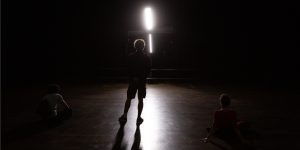
TORSO #1
Peter Kutin (AT)
TORSO #1 is a sound sculpture that is visually reminiscent of a klopotec. This windmill-like wooden construction serves as a scarecrow in vineyards as it mechanically generates sounds and vibrations. Here, an electro-acoustic system of four 100 V loudspeakers rotates at different speeds, generating feedback patterns and modulating sound signals and the spatial sound itself. The targeted acceleration and deceleration of the rotating of the four-voice system serves as the central compositional means for the 35-minute piece – the sculpture becomes an abstract, audiovisual instrument. Warning: The stroboscope-like visual stimuli can cause physical discomfort (dizziness, nausea, etc.) or epileptic seizures in susceptible individuals.
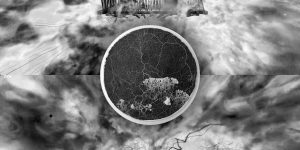
Slime mold reality
Bill (BiCheng) Zhou (CN)
This art piece combines virtual and biological spaces. The Physarum polycephalum (slime mold) is a superorganism that consists of a large number of single cells, and just like the ocean in Stanislaw Lem's novel Solaris, it has intelligence, it senses the environment, it remembers external stimulus and it can change the reality of those who interact with it.

RGB microscope
Hina Ishikawa (JP)
This drawing system uses the characteristics of the three primary colors of light. I focused on the differences between the action of drawing and the things which were drawn. Using the small display gives the viewer an experience like “looking through the micro world.”

Constellations of the Earth
Hiroshi Suzuki (JP), Masato Ohki (JP)
Constellations of the Earth is a project that draws a new “constellation” on the ground using a satellite and a handmade radio wave reflector. The earth observation satellite Daichi 2 transmits radio waves and observes the ground’s surface by registering the reflected radio waves. By arranging a radio wave reflector on the ground, we efficiently reflect the radio wave of Daichi 2 on the ground and draw a “constellation” there.


